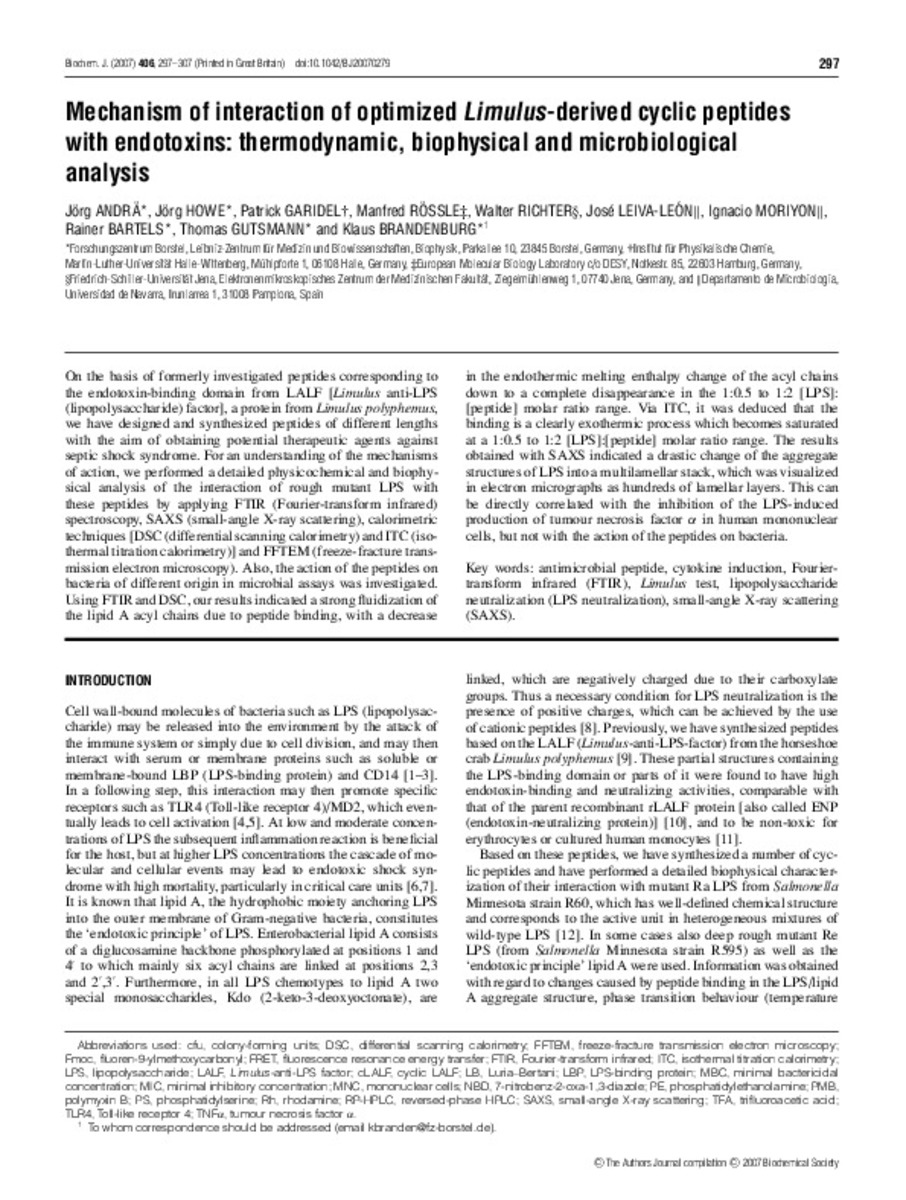Mechanism of interaction of optimized Limulus-derived cyclic peptides with endotoxins: thermodynamic, biophysical and microbiological analysis
Palabras clave :
Biophysics
Endotoxins pharmacology
Invertebrate hormones chemistry
Peptides
Cyclic chemistry
Thermodynamics
Fecha de publicación :
2007
Editorial :
Portland Press
Cita:
Andra J, Howe J, Garidel P, Rossle M, Richter W, Leiva-Leon J, et al. Mechanism of interaction of optimized Limulus-derived cyclic peptides with endotoxins: thermodynamic, biophysical and microbiological analysis. Biochem J 2007 Sep 1;406(2):297-307.
Aparece en las colecciones:
Estadísticas e impacto
0 citas en

Los ítems de Dadun están protegidos por copyright, con todos los derechos reservados, a menos que se indique lo contrario.







